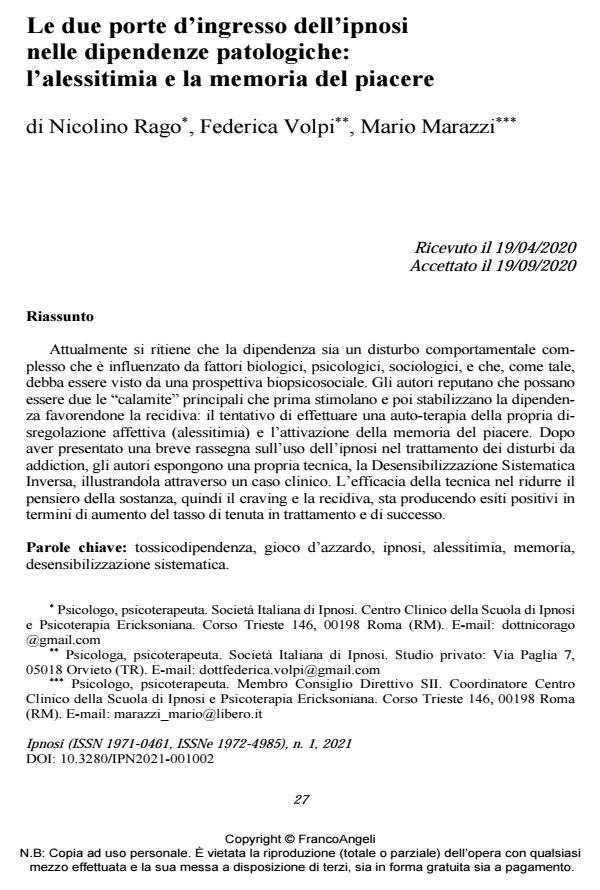The two doors of hypnosis in pathological addictions: alexithymia and the memory of pleasure
Journal title IPNOSI
Author/s Nicolino Rago, Federica Volpi, Mario Marazzi
Publishing Year 2021 Issue 2021/1
Language Italian Pages 14 P. 27-40 File size 222 KB
DOI 10.3280/IPN2021-001002
DOI is like a bar code for intellectual property: to have more infomation
click here
Below, you can see the article first page
If you want to buy this article in PDF format, you can do it, following the instructions to buy download credits

FrancoAngeli is member of Publishers International Linking Association, Inc (PILA), a not-for-profit association which run the CrossRef service enabling links to and from online scholarly content.
It is currently believed that addiction is a complex behavioral disorder that is influenced by biological, psychological, sociological factors, and that, as such, must be seen from a biopsychosocial perspective. The authors believe that there may be two main "magnets" that first stimulate and then stabilize addiction, fa-voring its relapse: the attempt to carry out a self-therapy of one’s affective dysregulation (alexithymia) and the activation of the memory of pleasure. After presenting a brief review on the use of hypnosis in the treatment of addictive dis-orders, the authors expose their own technique, Reverse Systematic Desensitiza-tion, illustrating it through a clinical case. The effectiveness of the technique in re-ducing the thought of the substance, therefore craving and relapse, is associated with an increased rate of maintained successful treatment.
Keywords: Drug addiction, gambling, hypnosis, alexithymia, memory, systematic desensitization.
Nicolino Rago, Federica Volpi, Mario Marazzi, Le due porte d’ingresso dell’ipnosi nelle dipendenze patologiche: l’alessitimia e la memoria del piacere in "IPNOSI" 1/2021, pp 27-40, DOI: 10.3280/IPN2021-001002